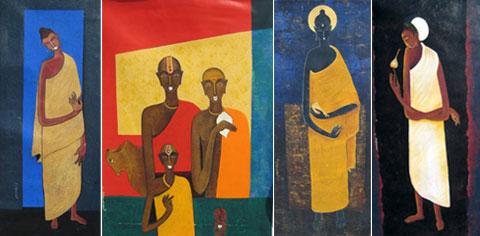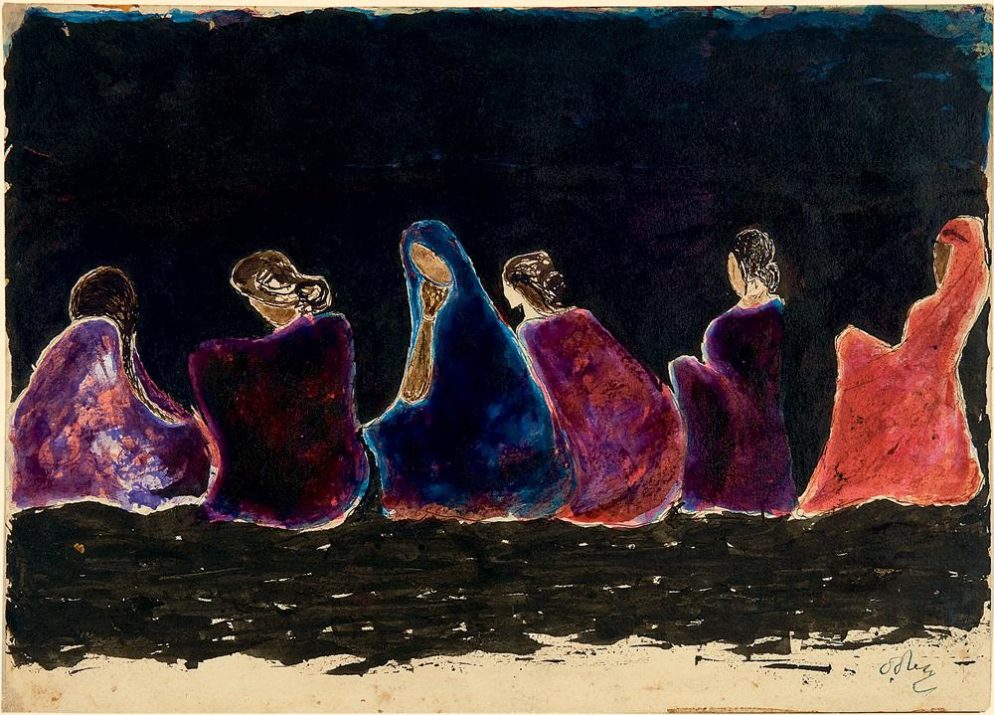Modern art is a term that is often confused with the abstract forms of art. There is a lot more to this form of art, though. Within India, the modern art moment was credited to the influences from the West largely. Indian art until then was deeply rooted into traditions and age-old legacy of elaborate paintings. Modernization essentially blended the traditional art along with the modern influences.
Tracing the history of Modern Art:

History of modern art
Modern Art period is known to have begun post 19th century. Before that, though, the artists were commissioned works of art by religious institutions such as the Church or wealthy individuals. These artists were briefed on what work was to be done and more often than not, it used to be elaborate murals that were scenes from the mythological stories that either carried morals or a set of instructions for the people. This form of art was devoid of any personal interaction of the artist or of the times it was created in. During the 19th century, however, things started to change. Artists began experimenting with people, places, and ideas that they were interested in or had a direct experience of. Dreams and symbols were extensively used and it was increasingly deviating from the notion that the Art should depict the real life as it is. They also started experimenting with expressive colors, newer formats and techniques, different mediums and non-traditional materials. These Modern artists took to a fairly new direction. Painters like Vincent van Gogh, Paul Cézanne, Paul Gauguin, Georges Seurat and Henri de Toulouse-Lautrec were the flag bearers of modern art globally.
Modern Art and India:

Modern art-evolution
The evolution of Modern Art in Indian Painting is said to have begun in Calcutta in the late 19th Century where old traditions were dying and the British were setting up the new schools of art. Initial protagonists of modern art including Raja Ravi Varma were influenced by the Western techniques and traditions like painting on easel using oil paints. However, when the freedom movement began that shunned all the Western inputs, Bengal school of Art was established that drew from the Indian culture and heritage. This then evolved into Rabindranath Tagore’s Shantiniketan School.
Due to the market potential provided by the merchants of the East India Company for the Native Art, the demand for water-colour paintings on paper and Mica that reflected the daily lives, rituals and festivities and the regal lifestyles significantly increased. The style was essentially a hybrid and was called ‘Company or Patna’ style. British didn’t consider old Indian art as living as it was it was suitable for temples and museums and hence established new art schools in Calcutta, Madras and Bombay.

Raja Ravi Verma – Modern art painting
Raja Ravi Varma of the princely state of Travancore was a self-taught remarkable painter who had achieved international acclaim when he was awarded the 1st prize at the Vienna Art Exhibition in the year 1873. Both he and Amrita Sher-Gil are considered amongst the first modernists. They used the Western techniques to develop a subjective interpretation of the Indian culture thus giving it a new aesthetic. Some other notable Indian painters born in the 19th Century are Mahadev Vishwanath Dhurandhar (1867–1944), Antonio Xavier Trindade (1870–1935), Manchershaw Fakirjee Pithawalla (1872–1937), Sawlaram Lakshman Haldankar (1882–1968) and Hemen Majumdar (1894–1948). Varma’s work fused Indian traditions with European art techniques. He was best known for his depiction of the scenes from the Indian epics of Mahabharata and Ramayana. He also got a printing press to create copies of his artwork.
Soon, the West was being influenced by the Indian Spiritual ideas the students of Calcutta school of art were imitating the Mughal miniatures that led to a serious conflict. While most nationalists opposed the imitation, artist Abindranath Tagore, nephew of the poet, Rabindranath Tagore. His work was significantly influenced by the Mughal art and style, that clashed with the materialism of the West. His depiction of India as Bharat Maata or Mother India is amongst the most known works.

Ravindranath Tagore – the painter in motion
When Rabindranath Tagore took over and established Shantiniketan, the focus shifted to the upliftment and preservation of Indian culture and heritage. Most of Rabindranath Tagore’s initial art was more or less private that were mainly small drawings coloured with Ink drawn from the unconscious. Benode Behari Mukherjee, Ramkinkar Baij, Shanko Chowdhury, Dinkar Kowshik, K. G. Subramanyan, Beohar Rammanohar Sinha, Krishna Reddy, A Ramachandran, Shobha Brhma, Ramananda Bandhapadhyay, Dharma Narayan Dasgupta, Sushen Ghose, Janak Jhankar Narzary are some of the prominent artists of the Shantiniketan School. They were amongst the first to challenge the idea of the modernism as they steered away from both the historical approach as well as the international one.
Post independence, several Indian Art schools were giving access to the modern techniques. Major artists began gaining international recognition. They established themselves in the international markets through their abstract artworks. In Bombay in 1947, Francis Newton Souza (1924–2002), Maqbool Fida Husain (Born 1915), and others formed the Progressive Artists’ Group. They had leftist leanings, rejected the nationalist art of the Bengal School, and embraced international modern art practices.
Today, several Indian artists are sought after in the international shores and are establishing their expressions of art through various formats. The Indian Art has come a long way and continues to evolve progressively by relying both, on the Indian culture and the adaptations of the west.



What do you think?